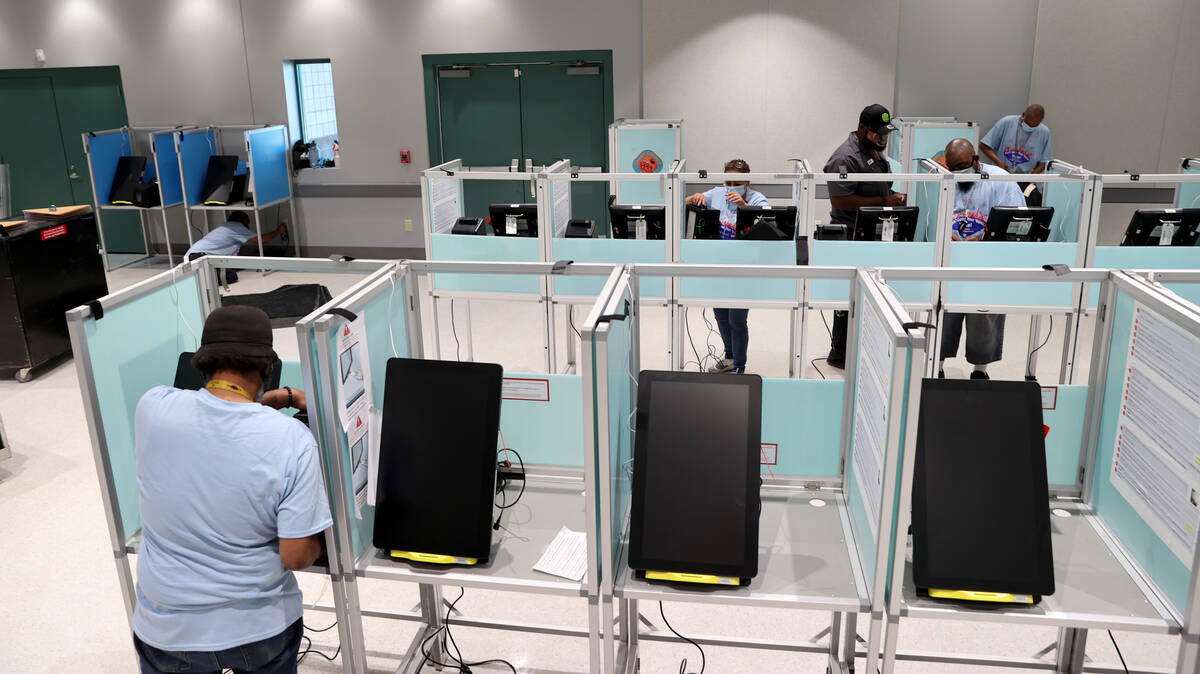VICTOR JOECKS: Question 3 is a bait and switch
Voting for Question 3 is like ordering filet mignon and biting into shoe leather.
By now, you’ve probably seen a TV ad or mailer supporting Question 3. Proponents want you to believe the proposed constitutional amendment is mostly about changing Nevada’s primary system.
“Nearly 1 million independent voters are locked out from Nevada’s closed primary — prohibited from voting in a taxpayer-funded election,” the voiceover on one Q3 ad states.
That’s the bait, and it sounds scandalous. How can voters be prohibited from voting?
The short answer: They’re not.
Nevada registers voters by party. In primaries, registered Democrats vote in the Democratic primary and Republicans vote in the Republican primary. All voters vote on nonpartisan races, such as those for city council or judge.
If independent voters want to vote in the Democrat or Republican primary, they can. They can update their party registration online or even at a voting site. They can even switch back to nonpartisan after voting.
So if all voters can already vote in primaries, what’s the point of Question 3?
That’s the switch. Question 3 would remake Nevada’s election system by instituting ranked choice voting.
The name sounds confusing. The details are far worse.
Currently, Nevada’s elections are so simple a first grader can explain them. The candidate with the most votes wins.
Say a first-grade class has 25 students, and they vote on their favorite ice cream flavor. Ten students prefer strawberry, while seven like vanilla best. Another five like chocolate, while two pick rocky road and one goes for cookies and cream.
Because it received the most votes, strawberry ice cream wins even though it didn’t receive a majority. Very straightforward. That’s Nevada’s current election system.
But ranked choice voting adds several steps to the counting process. Students don’t just vote for one flavor. They rank the five choices.
If no flavor receives a majority, the lowest vote-getter — cookies and cream — is eliminated. Say that student selected chocolate as his second choice. Chocolate’s total goes up to six. There’s still no majority, so rocky road is eliminated. The two kids who selected that flavor had chocolate ranked second. Chocolate goes up to eight, which puts it in second place.
Then vanilla — now in third place — is eliminated. Five of its votes go to chocolate, while two students went with strawberry. Chocolate wins.
Look at how complicated ranked choice voting made it to determine a class’s favorite ice cream flavor. Now, imagine that process for dozens of races, including some contests with more than 1 million votes cast.
If you thought it took a long time to find out election results now, Question 3 would delay things further. In tight races, officials would have to wait for all ballots to come in to determine who finished fifth. Then they could start redistributing votes. If voters don’t complete their rankings and their candidates are eliminated, their votes essentially disappear.
That’s called ballot exhaustion. The thing that’s really exhausting, however, is trying to understand ranked choice voting.
Listen to Victor Joecks discuss his columns each Monday at 7 a.m. with Kevin Wall on AM 670 KMZQ Right Talk. Contact him at vjoecks@reviewjournal.com or 702-383-4698. Follow @victorjoecks on X.























